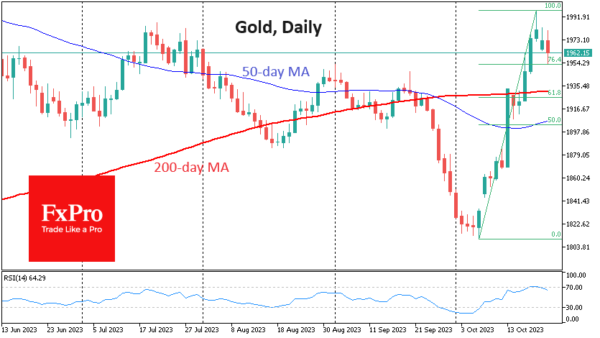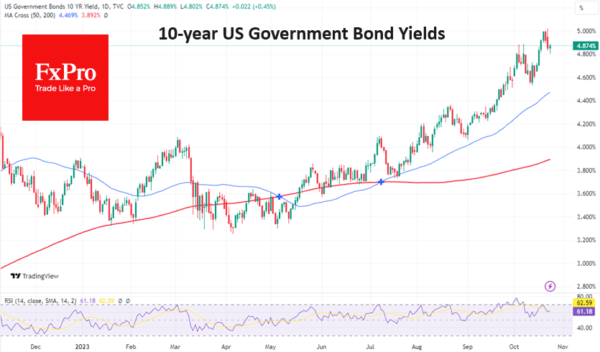Gold is experiencing profit-taking after an impressive rally following the escalation in the Middle East.
The cost of a troy ounce of gold was down to $1955 at the peak of the European session on Tuesday, after a two-week rally from $1811 to almost $2000 since the 6th of October.
This week’s opening with a gap down was a sign that the market had built considerable profit-taking demand. The gap was closed during the day, but the decline continued Tuesday.
The market blew off steam just as the daily RSIs hit overbought levels. If this is not some short-term market noise, a full-blown correction of the latest rally would take the price to $1925, up to 61.8% of the initial advance.
Theoretically, there is a more bullish scenario for gold. According to this, today’s pullback to $1955, or 76.4%, has already removed some overbought conditions and spurred enough buying demand to increase the price.
Looking at other markets, we continue to believe that the selling of gold is not yet complete. US 10-year Treasury yields approached 5% at the end of last week and briefly breached that level on Monday. But this attracted buyers into bonds, making the case for a yield top (price bottom).
While we often hear that rising government bond yields are bearish for gold, it is unlikely that significant capital will buy into a falling market to avoid catching a falling knife. Signs of a bottom forming could trigger an essential shift in the overriding trade, triggering a capital flow out of gold and into bonds.
The timing of this shift is also appropriate, as it is often in October that we see a change in long-term trends with the start of a new fiscal year. A year ago, such a shift was the stock market reversal and the beginning of a weakening dollar. And now it could be the emergence of interest in beaten-down long-term US bonds to the detriment of gold and possibly equities, whose yields are now lower than most debt market securities.















